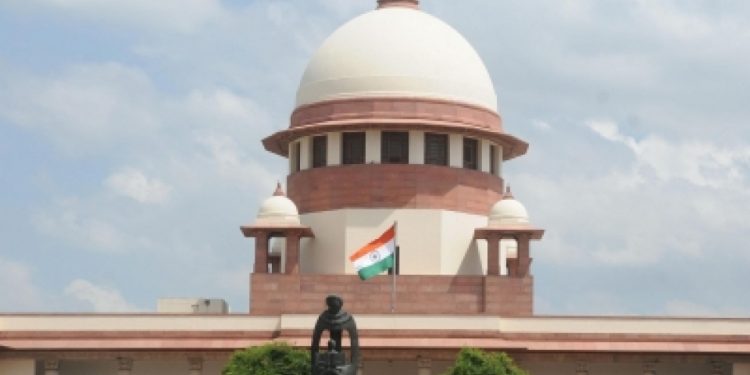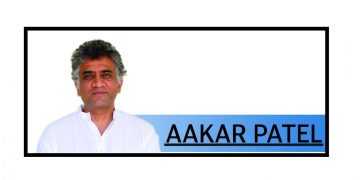New Delhi: In a significant development, the Supreme Court held Friday that the provisions contained in the Employees’ Pension Amendment (Scheme), 2014 are legal and valid.
The court said so far as the present members of the pension fund are concerned, it has read down certain provisions of the scheme as applicable in their cases.
A bench of Chief Justice U U Lalit and justices Aniruddha Bose and Sudhanshu Pardiwala said it agrees with the view taken in the 2016 verdict in the case of R C Gupta versus the regional provident fund commissioner, EPFO and others.
It added that the fund authorities shall implement the directives contained in the said judgment within a period of eight weeks.
“We accordingly hold and direct: The provisions contained in the notification no….Dated August 22, 2014 are legal and valid. So far as present members of the fund are concerned, we have read down certain provisions of the scheme as applicable in their cases and we shall give our findings and directions on these provisions in the subsequent sub- paragraphs”, the bench said.
The top court, which modified the verdicts of the Kerala, Rajasthan and Delhi high courts quashing the 2014 scheme, delivered the judgment on a batch of pleas, including those filed by the Employees’ Provident Fund Organisation (EPFO) and the Centre.
It noted that after the amendment of the scheme, the maximum pensionable salary was to be kept at Rs 15,000 per month, raising the earlier ceiling of Rs 6,500 per month.
The bench said “the requirement of the members to contribute at the rate of 1.16 per cent of their salary to the extent such salary exceeds Rs 15,000 per month as an additional contribution under the amended scheme is held to be ultra vires the provisions of the 1952 Act”.
The top court said it is, however, suspending the operation of this part of the order for a period of six months.
“We do so to enable the authorities to make adjustments in the scheme so that the additional contribution can be generated from some other legitimate source within the scope of the Act, which could include enhancing the rate of contribution of the employers. We are not speculating on what steps the authorities will take as it would be for the legislature or the framers of the scheme to make the necessary amendments,” it said.
The bench said for a period of six months or till such time an amendment is made, whichever is earlier, the employees’ contribution shall be a stop-gap measure.
“The said sum shall be adjustable on the basis of alteration to the scheme that may be made,” it said, adding that it does not find any flaw in changing the basis for the computation of pensionable salary.
The top court said the amendment to the pension scheme brought about by a notification dated August 22, 2014 shall apply to the employees of the exempted establishments in the same manner as the employees of the regular establishments.
“The employees who had exercised the option under the proviso to paragraph 11(3) of the 1995 scheme and continued to be in service as on September 1, 2014 will be guided by the amended provisions of paragraph 11(4) of the pension scheme,” it said.
The court clarified that the members of the scheme, who did not exercise the option as contemplated in the proviso to paragraph 11(3) of the pension scheme (as it was before the 2014 amendment), would be entitled to exercise the option under paragraph 11(4) of the post-amendment scheme.
“Their right to exercise the option before September 1, 2014 stands crystallised in the judgment of this court in the case of R C Gupta (2016 verdict). The scheme, as it stood before September 1, 2014, did not provide for any cut-off date and thus, those members shall be entitled to exercise the option in terms of paragraph 11(4) of the scheme, as it stands at present,” the bench said.
It added that their exercise of the option shall be in the nature of joint options covering the pre-amended paragraph 11(3) as also the amended paragraph 11(4) of the pension scheme.
“There was uncertainty as regards the validity of the post-amendment scheme, which was quashed by the judgments of the three high courts. Thus, all the employees who did not exercise the option but were entitled to do so but could not due to the interpretation on a cut-off date by the authorities, ought to be given a further chance to exercise their option,” it said.
The court said the time to exercise the option under paragraph 11(4), under these circumstances, shall stand extended by a further period of four months.
“We are giving this direction in exercise of our jurisdiction under Article 142 of the Constitution of India. Rest of the requirements as per the amended provision shall be complied with,” the bench added.
The top court said “the employees who had retired prior to September 1, 2014 without exercising any option under paragraph 11(3) of the pre-amendment scheme have already exited from the membership thereof. They would not be entitled to the benefit of this judgment”.
It said the employees who retired before September 1, 2014 upon exercising the option under paragraph 11(3) of the 1995 scheme shall be covered by the provisions of the said paragraph as it stood prior to the 2014 amendment.
PTI






































